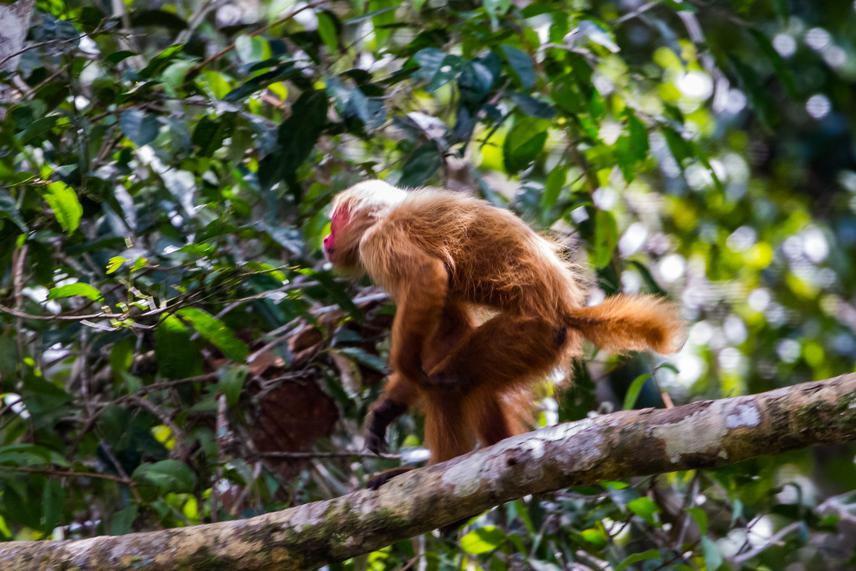Felipe Ennes Silva
Other projects
19 Mar 2014
Behavioral Ecology and Conservation of White Uakaries (Cacajao calvus calvus) in Amazon
24 Jan 2023
Using Field Surveys and Genomics to Unveil the Population Status of Bald-Headed Uakaris (Cacajao spp.) in Amazon Rainforest, Brazil
The bald-headed uakaris (Cacajao calvus spp.) have one of the most enigmatic patterns of
geographic distribution among the Neotropical Primates. Previous studies suggested that the ecological specialisation in seasonally flooded forests of white-water rivers – Várzea – influence its occurrence along the rivers, rather than within entire interfluves. I will collect data on the presence/absence and on the habitat characteristics to investigate the environmental determinants influencing the distribution of uakaris in the Amazon Rainforest. Finally, I will investigate the main threats affecting each subspecies in Brazil to provide a base for the Conservation Status assessment of uakaris.

The habitat requirements of bald-headed uakaris (Cacajao calvus spp.) is still controversial. The most in-depth study of the Ecology of bald-headed uakaris in Brazil supported the ecological specialisation in seasonally flooded forests of white-water rivers – várzea – as an important aspect to influence the pattern of distribution. However, further studies confirmed the presence of uakaris in flooded forests of black-water Rivers – igapó – and the use of adjoining unflooded forests – terra firme – of Juruá River basin. The geographic distribution of bald-headed uakaris is poorly studied and the factors influencing the Area of Occupancy in its geographic range are unknown. Disjunct distribution in bald-headed uakaris is known for two subspecies in Brazil: Cacajao c. rubicundus and C. c. calvus. How the different subspecies occupy this geographic range remains unclear. To properly assess the conservation status of uakaris in Brazil is important to understand if its patterns of distribution are influenced by its ecological specialisation and singular habitat suitability; or if the current knowledge on its occurrence is a matter of sampling and detectability.
Rapid survey methods for mammals inventories will be used including linear transects and interviews with local inhabitants. We will use an interview-based survey with household heads to get information on the presence of the Primates and to know how important they are as food for local communities. We will use small canoes to sample the flooded forest, and the pre-existing trails to survey the unflooded forest areas. The records of uakaris will be used to define the extent of occurrence and the area of occupancy.
The bald-head uakaris (Cacajao calvus ssp.) are Vulnerable, according to the IUCN Red List. The information on the occurrence, distribution and threats that we are collecting in this project will support the Conservation assessment of the different subspecies in Brazil.